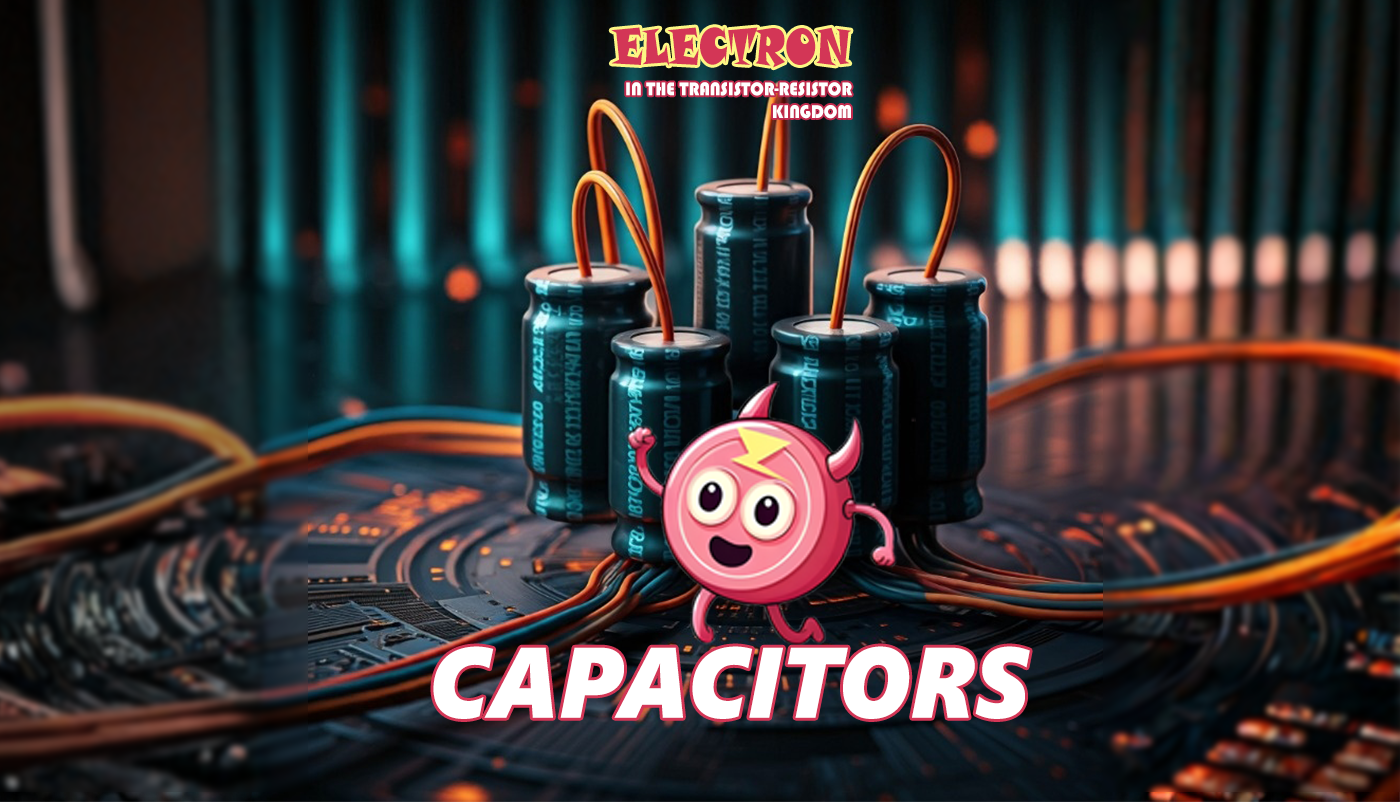Capacitors: Electron Storage and Dangerous Charges
05 Oct 2024

Capacitors are passive electronic components that can store electrical energy in the form of charge. They are widely used in electrical and electronic circuits for a variety of purposes, such as filtering, smoothing out voltage ripple, and delaying signals. However, due to their ability to store charge, capacitors can create potentially dangerous conditions, especially when used with large capacitances and high voltages.

1. How a Capacitor Works
A capacitor consists of two conducting plates separated by an insulating material (dielectric). When an electrical voltage is applied to the plates, one plate accumulates electrons (negative charge), while the other plate becomes depleted of electrons (positive charge).
Charge Storage: When voltage is applied, electrons move and accumulate on one plate, creating an electric field between the plates.
More details you can see in game Electron in the transistor-resistor kingdom.
2. Charge Storage Hazards
High Voltage: Capacitors, especially those with a large capacity and high working voltage, can store a significant amount of energy. If such a capacitor suddenly discharges, it can cause a strong electrical discharge (spark), which is dangerous for the player in the game.
Electric Shock: Even after disconnecting from the power source, a capacitor can retain a dangerous charge that can cause a serious electric shock if its terminals are touched.
Capacitor Breakdown: If the permissible voltage is exceeded or the dielectric inside the capacitor wears out, it can break down, which leads to a sharp discharge, heat generation, and even an explosion of the capacitor.
Fire Hazard: In large or faulty capacitors, such as electrolytic capacitors, a breakdown or improper use can cause a short circuit and an explosion, accompanied by the release of hot gases and a possible fire.
3. Examples of hazardous situations
High-voltage circuits: In power circuits where capacitors with high working voltages are used (such as in power supplies, amplifiers, and games), a serious electric shock can occur if not handled carefully.
Electrolytic capacitors: These components contain an electrolyte and can rupture or "explode" if the polarity is incorrect or if the voltage is too high.
Capacitors in pulse circuits: In circuits where capacitors are used to generate high-power pulses (such as in cameras with flash), the stored charge can be very dangerous.
4. Safety methods
Discharging capacitors: Always discharge capacitors before working on a circuit or components. This can be done with a resistor connected in parallel with the terminals of the capacitor.
Charge indicators: Some devices use special circuits or indicators that indicate whether a capacitor has a residual charge.
Insulation and fencing: High-voltage capacitors must be well insulated and installed in inaccessible places to avoid accidental contact.
Use of protective devices: When working with capacitors, especially in high-voltage circuits, it is necessary to use insulated gloves and tools, and also to observe electrical safety regulations.
5. Types of capacitors and their features
Different types of capacitors have their own characteristics and levels of potential danger:
Ceramic capacitors: Usually have a small capacity and operate at low voltages, so they are less dangerous.


Film capacitors: Have good stability and high working voltage, but can break down if the permissible voltage is exceeded.

Electrolytic capacitors: Have a large capacity and are used in DC circuits. If reversed or overloaded, they can explode.

Supercapacitors: Have a very high capacity and are able to accumulate a significant amount of energy. If improperly handled, they can be very dangerous due to the high discharge energy.

6. Recommendations for working with capacitors
It is better to avoid them in the game.
Voltage check before handling: Always measure the voltage on the capacitor before discharging it or connecting it to a circuit.
Using discharge resistors: After disconnecting the power, discharge resistors with suitable characteristics can be used to discharge the capacitors.
Storage and transportation: Capacitors, especially large or high-voltage ones, should be stored in a discharged state and in protective packaging.
Capacitors are useful and widely used components, but their ability to store energy can be dangerous. Proper handling, taking precautions, and understanding their characteristics can help avoid accidents and mishaps.
Related games
Electron in the transistor-resistor kingdom
Game: Perform tasks and rest cool. 2574 people play!
Play gameRelated news
Online broadcast about the game Electron in the Transistor-R...
broadcast about the game Electron in the Transistor-Resistor Kingdom
Read morePlatforms in the game Electron in the Transistor-Resistor Ki...
Platforms are the basic game elements in the platformer genre. They are surfaces or objects on which the player can move...
Read moreTeleport as a device for moving matter in space and time
This is a high-tech device that can instantly move a player from one point in the game world to another using plasma tec...
Read more




